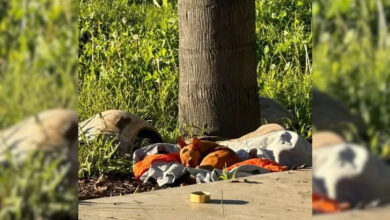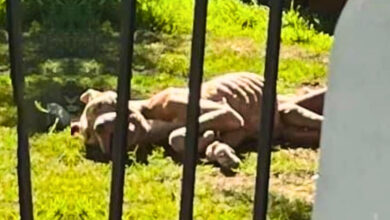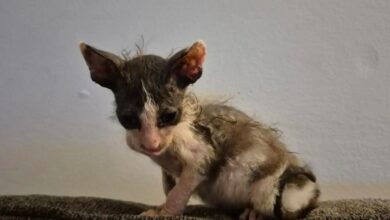Black Widow Spider Bite: Essential Steps and Complete Care Guide
Spiders are fascinating creatures that play an important role in controlling insect populations, but in the United States, two species stand out as particularly dangerous to humans: the Black Widow and the Brown Recluse. While encounters with these spiders are relatively rare, their bites can lead to serious medical complications if not treated promptly. Understanding the identification, symptoms, and treatment of these bites is essential for anyone living in areas where these spiders are common. This comprehensive guide will walk you through everything you need to know, from prevention to medical care.
Understanding the Dangerous Spiders
Brown Recluse Spider
The Brown Recluse spider is a light to dark brown arachnid, easily recognized by the violin-shaped marking on its back, with the neck of the violin pointing toward the abdomen. These spiders favor dark, undisturbed areas such as attics, closets, basements, or behind furniture. They are generally reclusive, hence their name, and bites often occur when the spider is accidentally trapped against the skin.
A Brown Recluse bite can initially feel painless, which often delays recognition. Within hours, however, symptoms may worsen, including:
-
Redness and swelling around the bite
-
Severe pain or itching
-
Development of a blister that may rupture
-
Necrosis (death of tissue) in severe cases
-
Fever, chills, and general malaise
Because the venom can destroy tissue, timely medical intervention is critical. Untreated bites can lead to long-term scarring or infections requiring surgical care.
Black Widow Spider
The Black Widow spider is easily identified by its glossy black body and the distinctive red hourglass marking on the underside of the female’s abdomen. Females are larger than males and more likely to bite when they feel threatened, though bites are still relatively uncommon. Black Widow venom is neurotoxic, meaning it affects the nervous system, and symptoms usually appear within an hour of being bitten.
Common signs of a Black Widow bite include:
-
Sharp or burning pain at the bite site
-
Muscle cramps and spasms that may radiate to the back, abdomen, or chest
-
Nausea and vomiting
-
Sweating and tremors
-
Difficulty breathing in severe cases
While fatalities are rare, Black Widow bites require prompt medical attention, particularly for children, elderly individuals, or those with compromised immune systems.
What to Do Immediately After a Bite
If you suspect that you’ve been bitten by a Black Widow or Brown Recluse spider, quick action can help reduce complications:
-
Stay Calm: Anxiety can increase heart rate and circulation, potentially spreading the venom faster. Try to remain as still and calm as possible.
-
Clean the Bite: Wash the area gently with soap and water to prevent infection. Avoid harsh scrubbing.
-
Apply a Cold Compress: A cold pack can help reduce pain, swelling, and inflammation. Apply it in intervals of 10–15 minutes.
-
Limit Movement: Keep the affected limb still and elevated if possible to slow the spread of venom.
-
Seek Immediate Medical Care: Even if symptoms appear mild, it is crucial to contact a healthcare provider. Early treatment can prevent serious complications.
Medical Treatment Options
Black Widow Bite Treatments
For most Black Widow bites, medical professionals focus on alleviating symptoms:
-
Pain Relief: Over-the-counter painkillers or prescription medications may be used.
-
Muscle Relaxants: These can reduce severe muscle cramps associated with the bite.
-
Antivenin: In severe cases, especially if breathing difficulties or systemic symptoms develop, antivenin may be administered.
Brown Recluse Bite Treatments
Brown Recluse bites require careful monitoring:
-
Corticosteroids: These may be prescribed to reduce inflammation.
-
Antibiotics: To prevent or treat secondary bacterial infections in necrotic tissue.
-
Surgery: In extreme cases where tissue damage is extensive, surgical intervention may be necessary to remove dead tissue.
Important Note: Avoid common home remedies such as applying heat, attempting to suck out the venom, or using unproven ointments, as these can worsen the injury.
Prevention Tips
Preventing spider bites is always better than treating them. Here are some practical strategies:
-
Declutter and Clean: Spiders like dark, quiet spaces. Regular cleaning of basements, attics, and storage areas reduces hiding spots.
-
Shake Out Items: Always check clothes, shoes, and bedding that have been stored in unused areas.
-
Wear Protective Clothing: When working in garages, sheds, or wooded areas, wear long sleeves, pants, and gloves.
-
Seal Cracks: Use caulk or weatherstripping to close gaps around windows, doors, and walls.
-
Pest Control: If you live in areas where Black Widows or Brown Recluses are common, professional pest management can help reduce risk.
Recognizing When to Seek Help
Not every spider bite requires urgent care, but certain warning signs should prompt immediate medical attention:
-
Severe or worsening pain
-
Spreading redness or blistering
-
Fever, chills, or systemic symptoms
-
Muscle cramps or difficulty breathing
Early intervention can mean the difference between a manageable bite and a serious medical emergency.
Living Safely With Spiders
While the thought of venomous spiders can be frightening, it’s important to remember that bites are rare. Most spiders, including non-venomous species, play a beneficial role by controlling insect populations. Awareness, proper precautions, and careful behavior in high-risk areas are key to living safely without fear.
Regular inspection of your home, maintaining cleanliness, and educating family members about the appearance of dangerous spiders can significantly reduce the likelihood of encounters. Awareness campaigns and local resources can also help identify risk zones in your area.
Final Thoughts
The Brown Recluse and Black Widow spiders may be small, but their bites can cause serious health complications if not handled appropriately. Knowledge is your best defense: recognizing the spiders, understanding the symptoms of their bites, and knowing what steps to take immediately can prevent minor incidents from becoming life-threatening emergencies.
With the right precautions and timely medical care, these bites are manageable, and most people recover fully. Remember, the key elements of spider safety are awareness, prevention, and prompt treatment. By taking spider bites seriously and educating yourself and your family, you can enjoy your home and outdoor spaces without undue fear.
In summary, understanding the risks, recognizing the signs, and responding quickly to bites are essential strategies for safety. The rare encounter with a venomous spider doesn’t have to become a medical crisis if approached with knowledge and care. Keep this guide handy, follow preventive measures, and seek professional help if needed — because when it comes to Black Widow and Brown Recluse bites, preparation truly is the best protection.





